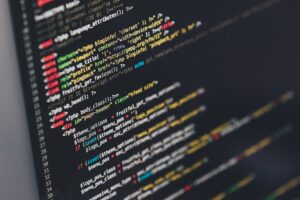Introduction
The Internet of Things (IoT) has ushered in a new era of interconnected devices that are changing the way we live and work. Android Things, an embedded platform developed by Google, is at the forefront of this transformation. In this article, we will delve into what Android Things is, how it works, and the diverse range of applications it offers in IoT devices.

-
Understanding Android Things
1.1. Definition
Android Things is an IoT platform developed by Google that allows developers to build connected, embedded devices using the Android operating system as the foundation. It extends the Android ecosystem to a wide array of IoT devices, enabling them to benefit from the same security, scalability, and development tools that have made Android a dominant force in the mobile world.

1.2. Different from Android
While Android Things shares the Android name, it is distinct from the Android operating system used in smartphones and tablets. Android Things is designed specifically for IoT and embedded devices, optimized for low-power and resource-constrained environments.
-
How Android Things Works
2.1. Embedded OS
Android Things is essentially an embedded operating system. It serves as the software foundation for IoT devices, providing the essential components needed for device functionality, connectivity, and interaction with the physical world.

2.2. Hardware Compatibility
The platform is compatible with a range of hardware, including single-board computers (SBCs) like the Raspberry Pi and custom-designed hardware. This compatibility allows developers to choose the hardware that best suits their IoT project.
2.3. Android Things SDK
Developers use the Android Things SDK to build and deploy applications for their IoT devices. The SDK includes tools, libraries, and APIs that simplify the development process, making it accessible to Android developers.

2.4. Google Cloud Integration
Android Things seamlessly integrates with Google Cloud services, enabling IoT devices to send and receive data, perform machine learning tasks, and leverage cloud-based analytics and storage.
III. Applications of Android Things in IoT Devices
3.1. Home Automation
Android Things powers a wide range of IoT devices for home automation. These include smart thermostats, lights, locks, and security cameras that users can control remotely via smartphone apps or voice commands.

3.2. Industrial IoT
In the industrial sector, Android Things is used in IoT devices that monitor and control manufacturing equipment, track inventory, and optimize supply chains. These devices improve operational efficiency and reduce downtime.
3.3. Healthcare
IoT devices built with Android Things are used in healthcare for remote patient monitoring, medication management, and medical equipment maintenance. These devices enhance patient care and streamline healthcare processes.
3.4. Smart Cities
Android Things contributes to the development of smart city infrastructure. IoT devices built with the platform are used for smart traffic management, waste management, environmental monitoring, and energy conservation.

3.5. Retail
Retailers deploy Android Things-powered devices for inventory management, point-of-sale systems, and customer engagement solutions like digital signage and interactive kiosks.
3.6. Transportation
In transportation, Android Things is used in IoT devices for vehicle tracking, fleet management, and passenger information systems. These devices improve transportation safety and efficiency.

-
Benefits of Android Things in IoT Devices
4.1. Rapid Development
Android Things simplifies IoT device development by leveraging the Android developer ecosystem. Developers can apply their existing knowledge of Android app development to create IoT applications.

4.2. Security
Security is a top priority in IoT, and Android Things benefits from the robust security measures implemented in the Android operating system. This includes regular security updates and features like Verified Boot.
4.3. Scalability
Android Things is scalable, allowing developers to build IoT solutions for a wide range of use cases, from small-scale projects to large, enterprise-level deployments.

4.4. Google Cloud Integration
The seamless integration with Google Cloud services facilitates data storage, analytics, and machine learning capabilities, enabling IoT devices to make intelligent decisions based on data.
4.5. Ecosystem Support
Android Things benefits from a supportive ecosystem of hardware manufacturers, development boards, and community resources, making it easier for developers to access the necessary tools and components.
-
Challenges and Considerations
5.1. Hardware Compatibility
Not all hardware platforms are compatible with Android Things, which may limit device choices for certain projects. Developers need to carefully select hardware that aligns with their project requirements.

5.2. Device Longevity
IoT devices are often expected to have long lifecycles. Developers using Android Things must consider the longevity of software support, especially if hardware components become outdated or unavailable.
5.3. Power Consumption
Android Things is optimized for low-power devices, but developers must still consider power consumption when designing IoT solutions, as battery-powered devices require efficient power management.

5.4. Customization
While Android Things provides a robust framework, some developers may require deep customization for specific IoT applications. This can be challenging within the constraints of the platform.
-
The Future of Android Things
6.1. Continued Innovation
Google continues to invest in Android Things, adding new features and capabilities to support evolving IoT use cases. This includes improvements in machine learning, edge computing, and security.

6.2. Industry Adoption
As more industries recognize the potential of Android Things in IoT device development, we can expect wider adoption across sectors such as healthcare, manufacturing, and agriculture.
6.3. Edge Computing
Edge computing, which involves processing data locally on IoT devices, is a growing trend. Android Things is well-positioned to support edge computing applications due to its compatibility with Google Cloud services and machine learning tools.

VII. Conclusion: Android Things Shaping the Future of IoT
In conclusion, Android Things is a versatile and powerful platform that is transforming the IoT landscape. It simplifies the development of IoT devices, enhances security, and enables seamless integration with Google Cloud services. With applications spanning industries from healthcare to smart cities, Android Things is poised to play a pivotal role in shaping the future of IoT, driving innovation and efficiency in various sectors while improving the quality of life for individuals and communities.


